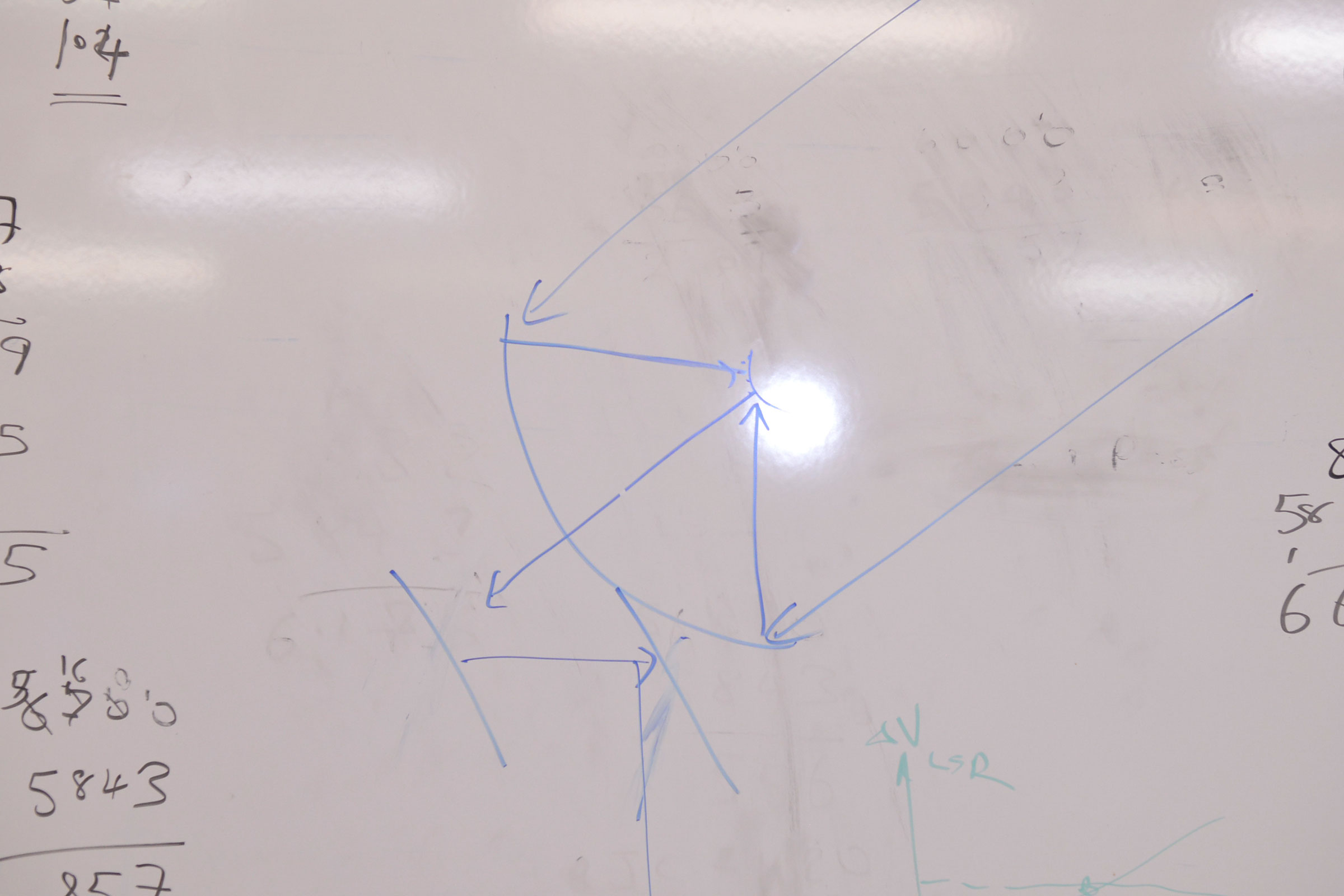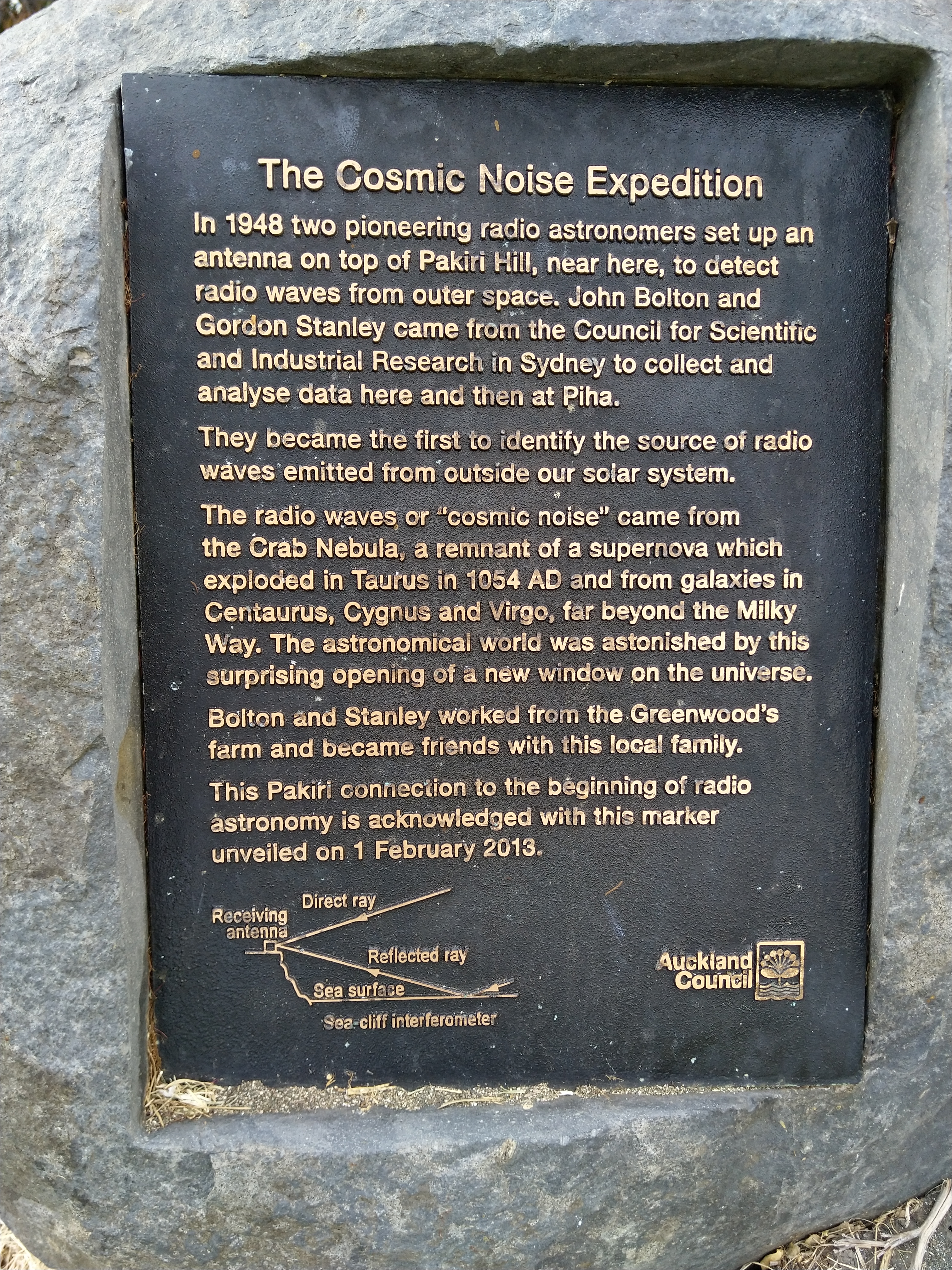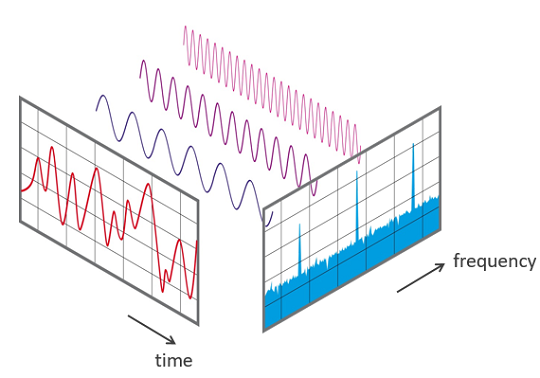
What is Radio?
Radio waves are not sounds, but radiate on the electromagnetic spectrum along with gamma rays, x-rays, visible and near visible light, and microwaves. The length of time between peaks in a wave determines the frequency. Antennae have specific material properties that enable them to detect and interpret the subtle signs of electromagnetic radiation. For example, an arrangement of lenses can be used to direct waves of light onto a sensitive surface for observation, or a coil of wire sympathetically resonates with a specific radio frequency. Maybe in tuning your radio so high that it moves past all possible stations, you could stumble upon different frequencies and even inadvertently listen in on visible light! In a common experience of listening to a radio, aggregated fields of static form a foundational structure composed of many even yet discrete points of difference. Bisecting this excited field is the time domain, on which harsh spikes in the sound soften into sinusoidal undulations. What can bounce off the ocean? A stone, of a certain size and shape, thrown in the right way will reflect off the surface of the water. Under most circumstances, things tend to fall apart. Radio waves however, are some of the most enduring signals that can be made—traveling for eons across the vacuum of space. When intercepted by a wave, the stone is deflected.
What is interferometry?
Radio waves can literally bounce off the ocean. In 1948 a group of Australian scientists arrived by ship in Auckland with their interferometer mounted on a trailer. They were looking for a west facing cliff of the right height, with a steady supply of power. Two sites were chosen, in Pakiri and Piha, to make observations that would lead to the birth of radio astronomy as we know it today. A way of knowing about something is to observe the differences between iterations of itself. As any experience unfolds, our developing memories and expectations of that experience interfere with our continuing engagement with the present. Basing their method on Lloyds mirror, in which light is projected directly towards a screen at the same time as its reflection, the scientists recorded radio waves from the Crab Nebula. Focusing on the interference between directly recorded waves and their reflections off the surface of the ocean, cosmological objects can be measured and located. Using the ocean as a vast mirror expands the aperture of the antenna beyond practical limitations. Perception meets reflection at the cliff top, amplified at certain times of day, and conditions of the weather, for we do not hear sounds, but hear in them. Observations made here will directly and indirectly affect the nature of the things being observed. Tangents and reflections written into a text or conversation may interfere with our desire for narrative structure. Could we take our tangent somewhere? Perhaps into a search for the past as it interferes with local reflections.


Calibrations
We were trying to pinpoint M17 amongst the static. By applying reference tones, we subtly phased against the spike that appeared on the spectrum analyser. For things to coalesce in such a way that we could be sure we were hearing what we were seeing, we had to scan azimuth and zenith by a specific degree across the object to find out if our predictions were correct. A length of wire, a variable capacitor ripped out of an old radio tuner, and an adapted laundry basket frame make up the components for an AM loop antenna. Sitting on the gridded floor next to this object was a plastic bucket wrapped in tinfoil that Tim was working on. Trying to record the antenna resonating with radio waves seemed to affect the nature of the sound. Upon pressing the record button, the sound would pulse at regular intervals. It seemed that our attempts to observe the recordings we were making of the sonic phenomena inherently altered the nature of the recordings. We are still unsure whether this interference had any lasting consequences.


What is Radio?
Radio waves are not sounds, but radiate on the electromagnetic spectrum along with gamma rays, x-rays, visible and near visible light, and microwaves. The length of time between peaks in a wave determines the frequency. Antennae have specific material properties that enable them to detect and interpret the subtle signs of electromagnetic radiation. For example, an arrangement of lenses can be used to direct waves of light onto a sensitive surface for observation, or a coil of wire sympathetically resonates with a specific radio frequency. Maybe in tuning your radio so high that it moves past all possible stations, you could stumble upon different frequencies and even inadvertently listen in on visible light! In a common experience of listening to a radio, aggregated fields of static form a foundational structure composed of many even yet discrete points of difference. Bisecting this excited field is the time domain, on which harsh spikes in the sound soften into sinusoidal undulations. What can bounce off the ocean? A stone, of a certain size and shape, thrown in the right way will reflect off the surface of the water. Under most circumstances, things tend to fall apart. Radio waves however, are some of the most enduring signals that can be made—traveling for eons across the vacuum of space. When intercepted by a wave, the stone is deflected.
What is interferometry?
Radio waves can literally bounce off the ocean. In 1948 a group of Australian scientists arrived by ship in Auckland with their interferometer mounted on a trailer. They were looking for a west facing cliff of the right height, with a steady supply of power. Two sites were chosen, in Pakiri and Piha, to make observations that would lead to the birth of radio astronomy as we know it today. A way of knowing about something is to observe the differences between iterations of itself. As any experience unfolds, our developing memories and expectations of that experience interfere with our continuing engagement with the present. Basing their method on Lloyds mirror, in which light is projected directly towards a screen at the same time as its reflection, the scientists recorded radio waves from the Crab Nebula. Focusing on the interference between directly recorded waves and their reflections off the surface of the ocean, cosmological objects can be measured and located. Using the ocean as a vast mirror expands the aperture of the antenna beyond practical limitations. Perception meets reflection at the cliff top, amplified at certain times of day, and conditions of the weather, for we do not hear sounds, but hear in them. Observations made here will directly and indirectly affect the nature of the things being observed. Tangents and reflections written into a text or conversation may interfere with our desire for narrative structure. Could we take our tangent somewhere? Perhaps into a search for the past as it interferes with local reflections.